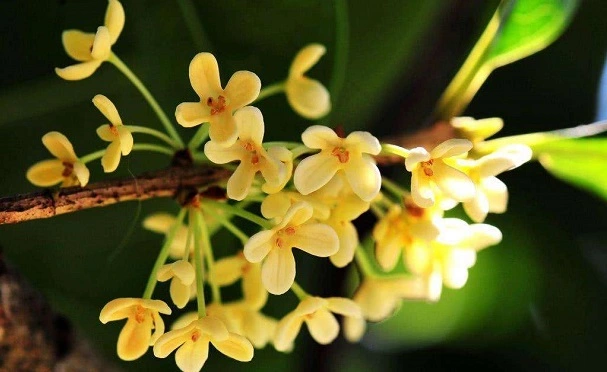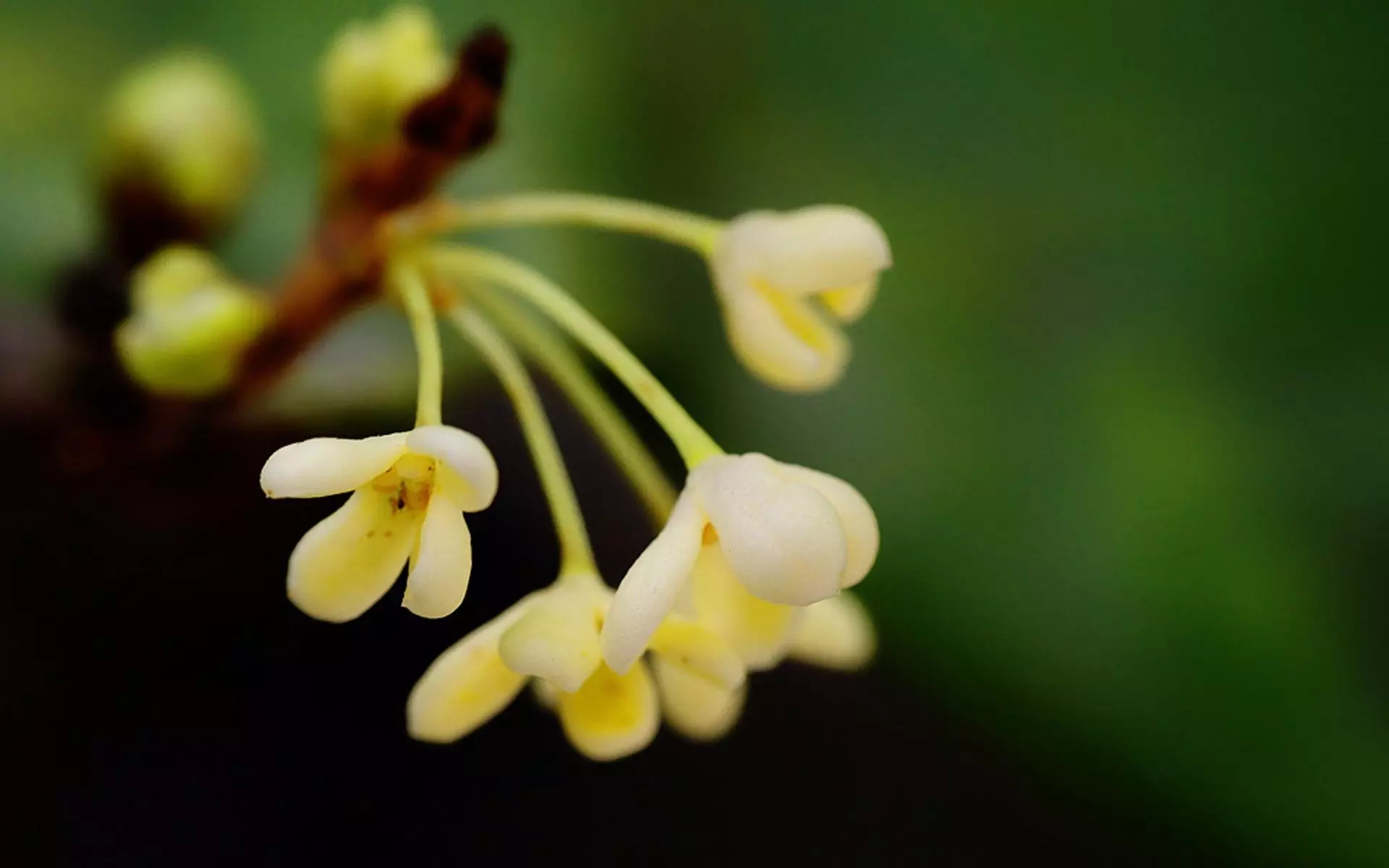When To Plant A Tea Olive Tree?
Written by Ivy
Nov 22 2022

What you need to know about when to plant a Tea Olive and how to grow a Tea Olive tree is outlined below.
When planted right and in the right spot Tea Olive Osmanthus, also called "sweet olive," are exceptionally easy to grow. In spite of this, some professional guidance can be very helpful.
Tea olive tree has thick green leaves and delicate and beautiful plant type. Tea olive flower is golden yellow and mainly blooms in autumn. Although the flowers are small, they have strong fragrance and fragrance. In the past, tea olive tree was a precious plant, but now it has been popularized in greening, with great planting and demand. So, when is tea olive tree best planted? Tea olive tree cultivation techniques? Let's have a look!
In the four seasons of spring, summer, autumn and winter, tea olive tree grows fastest in spring. It is called spring shoot. At that time, it will grow wildly. Sometimes it can grow 2cm high in one night (for seedlings). In winter, it is the dormancy period of tea olive tree. At this time, tea olive tree is basically not long. Generally speaking, it is suitable for pruning branches at this time.
Most tea olive seedlings have less vitality than tea olive tree, so they can only be transplanted in spring, because the survival rate of transplantation in other seasons is very low. In general, tea olive tree with strong vitality is basically suitable for transplanting in any other season as long as it is not transplanted in summer, and the survival rate can basically reach 100% (except for objective factors).
Therefore, we should seize this spring shoot period. We should plant tea olive seedlings before spring, that is, in the autumn or winter of the previous year, so that they can adapt to the new environment and take root again. When tea olive tree takes root, it will be better to take branches in spring. If we use spring to transplant, we may miss the spring shoot period. In addition, the temperature drops in autumn and the transpiration of tea olive tree seedlings decreases, which is conducive to repairing the injured roots during transplanting and allowing it to survive the winter safely.
The survival rate of tea olive seedlings transplanted in winter is relatively high as long as they are properly managed. Although it is cold in winter (it is not easy to plant in the North), tea olive seedlings grow slowly and will not sprout and branch after transplanting, tea olive seedlings are basically in dormancy in winter, and their response to the outside world and their own life needs are also low.
Read More:
How To Propagate Tea Olive Tree?
When planted right and in the right spot Tea Olive Osmanthus, also called "sweet olive," are exceptionally easy to grow. In spite of this, some professional guidance can be very helpful.
Tea olive tree has thick green leaves and delicate and beautiful plant type. Tea olive flower is golden yellow and mainly blooms in autumn. Although the flowers are small, they have strong fragrance and fragrance. In the past, tea olive tree was a precious plant, but now it has been popularized in greening, with great planting and demand. So, when is tea olive tree best planted? Tea olive tree cultivation techniques? Let's have a look!
Suitable Time for Tea Olive Tree PlantingCultivation Techniques of Tea Olive TreeWhere Should I Plant My Olive Tree?Frequently Asked Questions About Tea Olive Tree
Suitable Time for Tea Olive Tree Planting
Tea olive tree is suitable for being planted in early spring or late autumn. It is recommended that you plant tea olive tree in early spring, because the overall temperature environment in early spring is about 11 ℃ to 20 ℃, so early spring is undoubtedly very suitable for the growth of tea olive tree.In the four seasons of spring, summer, autumn and winter, tea olive tree grows fastest in spring. It is called spring shoot. At that time, it will grow wildly. Sometimes it can grow 2cm high in one night (for seedlings). In winter, it is the dormancy period of tea olive tree. At this time, tea olive tree is basically not long. Generally speaking, it is suitable for pruning branches at this time.
Most tea olive seedlings have less vitality than tea olive tree, so they can only be transplanted in spring, because the survival rate of transplantation in other seasons is very low. In general, tea olive tree with strong vitality is basically suitable for transplanting in any other season as long as it is not transplanted in summer, and the survival rate can basically reach 100% (except for objective factors).
Therefore, we should seize this spring shoot period. We should plant tea olive seedlings before spring, that is, in the autumn or winter of the previous year, so that they can adapt to the new environment and take root again. When tea olive tree takes root, it will be better to take branches in spring. If we use spring to transplant, we may miss the spring shoot period. In addition, the temperature drops in autumn and the transpiration of tea olive tree seedlings decreases, which is conducive to repairing the injured roots during transplanting and allowing it to survive the winter safely.
The survival rate of tea olive seedlings transplanted in winter is relatively high as long as they are properly managed. Although it is cold in winter (it is not easy to plant in the North), tea olive seedlings grow slowly and will not sprout and branch after transplanting, tea olive seedlings are basically in dormancy in winter, and their response to the outside world and their own life needs are also low.

Cultivation Techniques of Tea Olive Tree
- Soil Selection
- Propagation Method
Read More:
How To Propagate Tea Olive Tree?
-
Management Technique
Where Should I Plant My Olive Tree?
Since olives are Mediterranean plants, they do best in environments that closely resemble the hot, dry climate of their natural habitat. Choose the sunniest and most sheltered spot available – a south-facing spot with a brick wall behind it will work well.Frequently Asked Questions About Tea Olive Tree
Latest Updated
- Benefits of Bugleweed - 7 Science-backed Health Benefits
- Bugleweed Dangers & Side Effects - Is It Poisonous?
- How to Plant Evergreen Trees - What You Should Know
- When to Plant Evergreens - Grow Guide for Evergreen Trees
- 12 Wonderful Evergreen Shrubs for Your Garden
- 12 Popular Evergreen Plants with Pictures for Beginners
- When And How To Prune A Lilac Bush Like a Pro
- How to Grow & Care for Lilac Vine (Hardenbergia Violacea)
- Japanese Lilac Tree (Syringa Reticulata) Care & Propagation Guide
- Shumard Oak Pros and Cons - What to Know
Popular Articles
- Winter maintenance of Antirrhinum Majus
- How to Grow Terminalia Mantaly Tree
- How to Grow and Care for Crossostephium Chinense
- How to grow Antirrhinum Majus in spring
- Peristeria Elata (Dove Orchid) Profile: Info & Care Guide
- Underwatered Snake Plant (Sansevieria Trifasciata) - Signs And How To Fix
- How to Care for Brazilian Jasmine Plant (Mandevilla Sanderi)
- How to Grow & Care for Graptopetalum Purple Delight in Summer
- Rosa Chinensis (China Rose): Plant Growing & Care Tips
- How to Care for Baby Sun Rose (Aptenia Cordifolia)